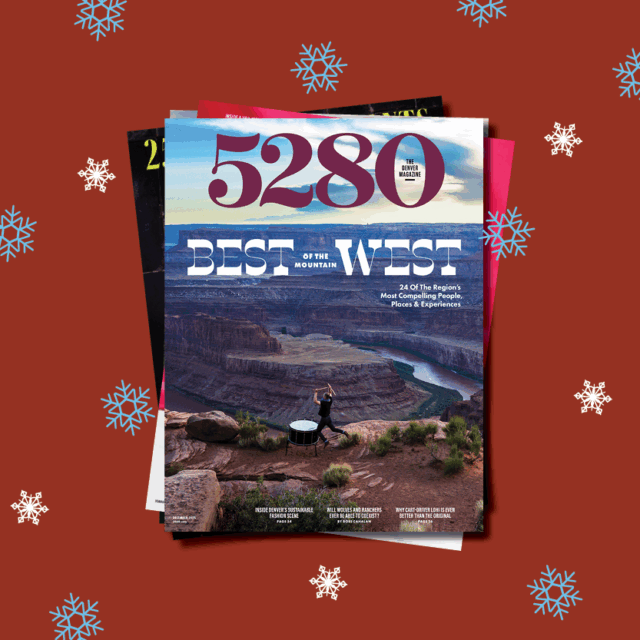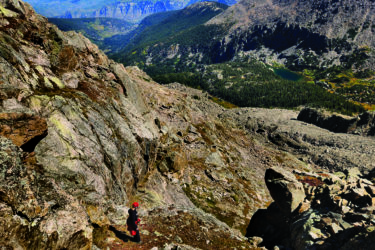The Local newsletter is your free, daily guide to life in Colorado. For locals, by locals.
The largest monolith in CNM, Independence Monument is the lone surviving remnant of an extensive ridge that once linked the Island formation to the east and the plateau upon which the visitor center is built. As wind and water gnawed at the delicate sandstone, the rock eroded along natural fracture lines. Over time, the walls became weak and collapsed, giving shape to the pinnacle we see today. After discovering this spire, the patriotically minded John Otto inscribed the names of the Declaration of Independence signers on the rock. Then, in 1910, on the Fourth of July, Otto climbed Independence using poles driven into holes he’d drilled and temporarily planted an American flag on top. The tradition continues today: Each July rock climbers wave the Stars and Stripes from the summit. (If you’re not up for several pitches of moderate climbing, including an exposed final section, the nearby Monument Canyon area has myriad other, shorter climbing routes.)
450 feet: Height of Independence Monument. It’s CNM’s tallest monolith.

1910: Year John Otto first climbed the spire. If you look closely from the viewpoint at Otto’s Trail, you can still see the holes he drilled into the rock to assist his ascent.
2: Months Otto was married to artist Beatrice Farnham after exchanging vows at the base of Independence Monument in 1911. Farnham left Colorado saying, “I could not live with a man to whom even a cabin was an encumbrance.”








